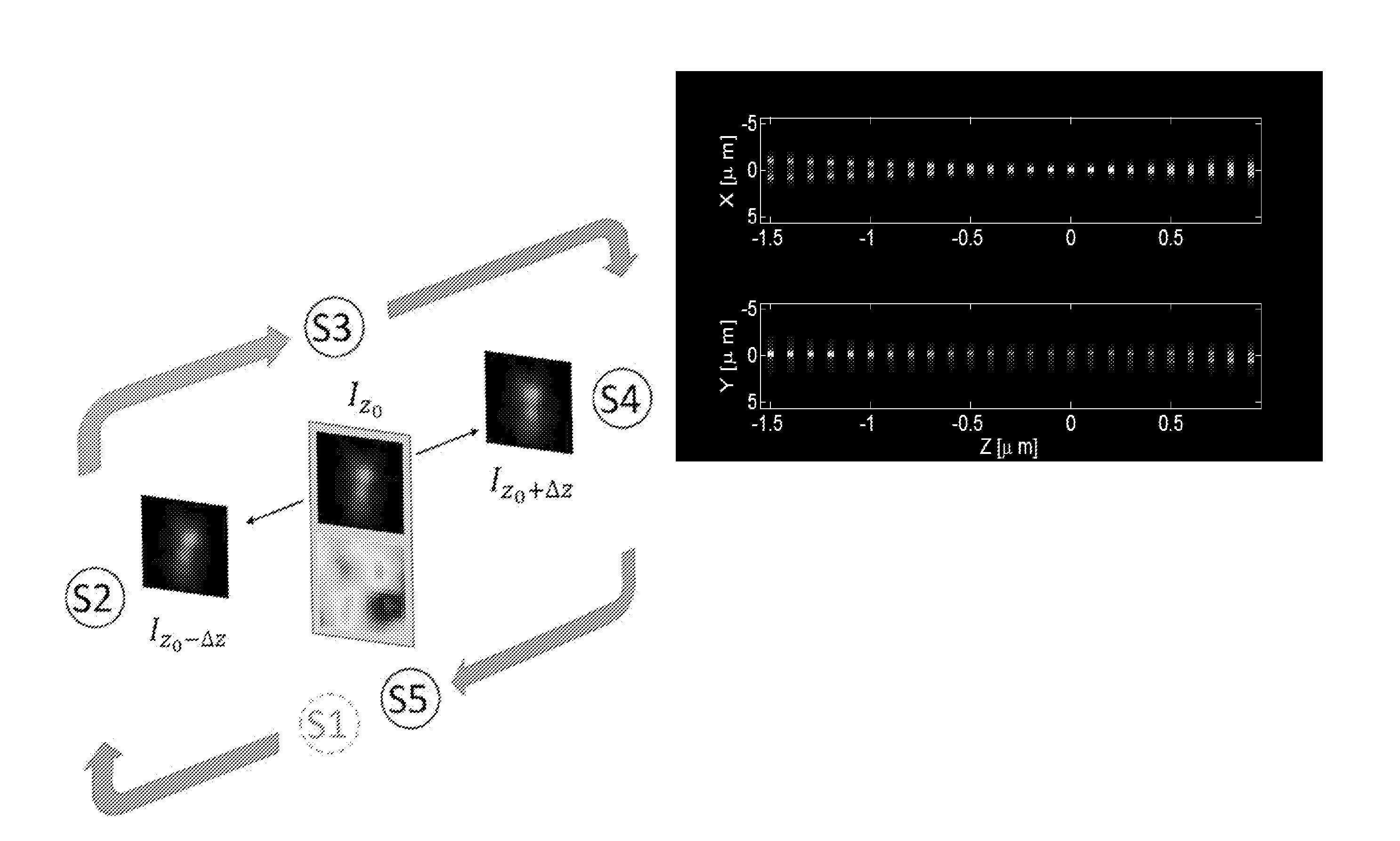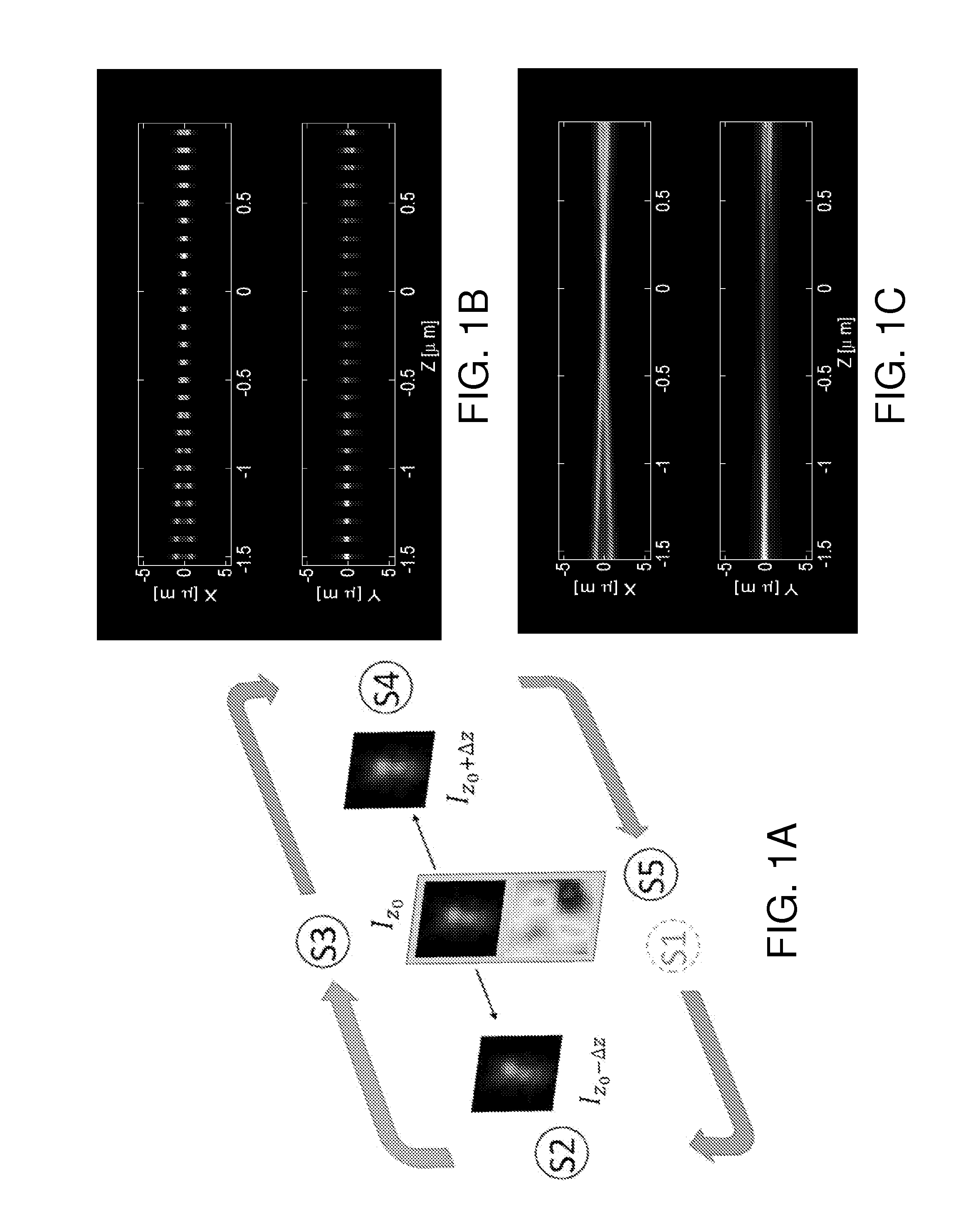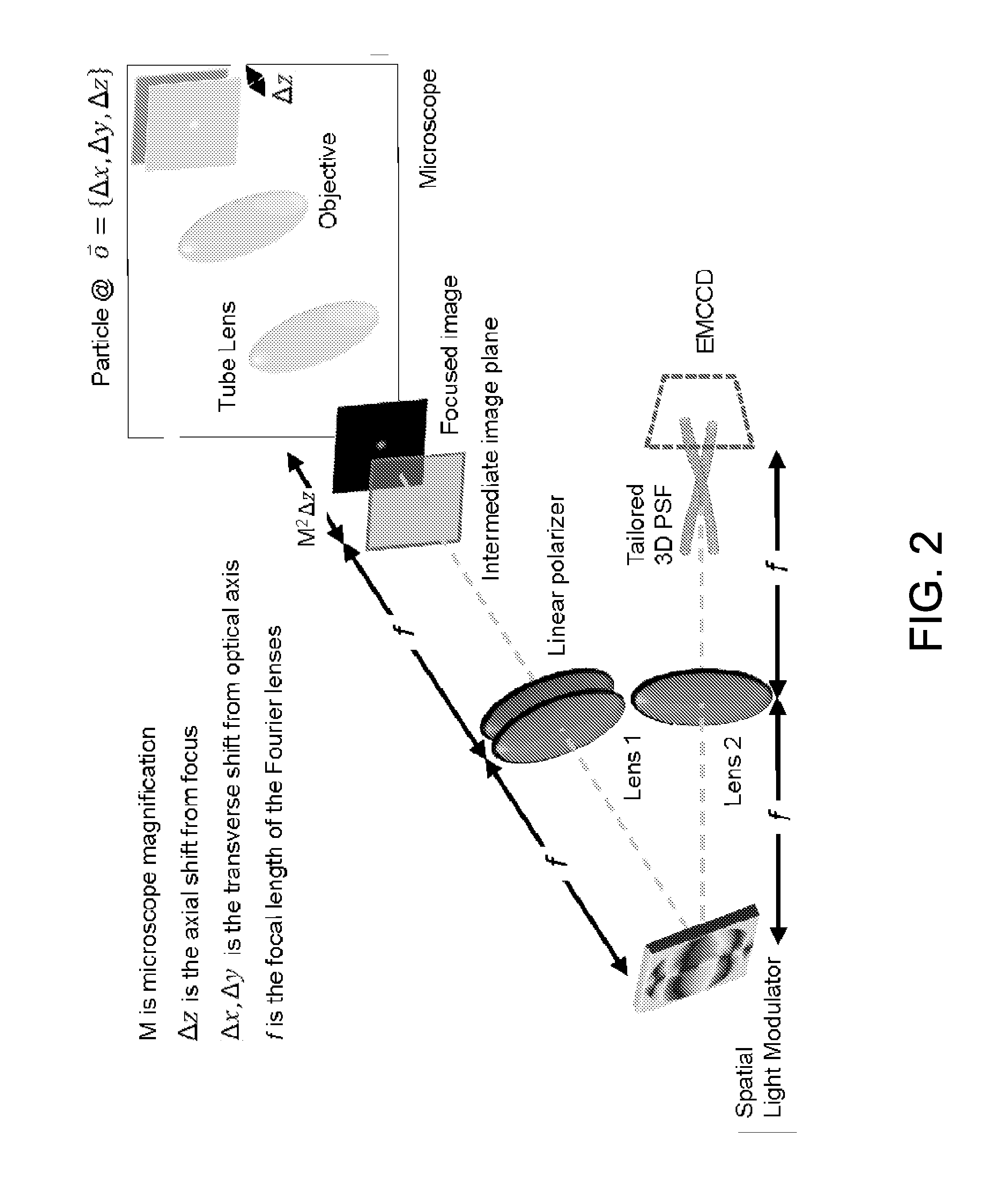Methods and systems for three dimensional optical imaging, sensing, particle localization and manipulation
a three-dimensional optical imaging and sensing technology, applied in image enhancement, image analysis, instruments, etc., can solve the problems of loss of restoration quality in the mtf, affecting the axial range or three-dimensional imaging and sensing, and both classical lenses and axial invariant solutions implemented are by definition ill-suited for axial ranging or three-dimensional imaging and sensing, and the point spread function designed for three-dimensional imaging has therefore been ill-suited for extended depth of field
- Summary
- Abstract
- Description
- Claims
- Application Information
AI Technical Summary
Benefits of technology
Problems solved by technology
Method used
Image
Examples
Embodiment Construction
[0048]Various embodiments of the present invention generally relate to systems and methods with optimal 3D localization procedures in photo-activation localization microscopy. More specifically, some embodiments relate systems and methods for precise object or particle position estimation in 3D with an increased resolution for a given number of photons detected and reduced data acquisition time for a given target resolution. For example, in some embodiments, the stochastic emission of light from molecule ensembles may be imaged as a collection of Point Spread Function (PSF), which may be used for individual estimation of the position of each particle in 3D. A wide-field image may be rendered as the composite of all the estimations from time-multiplexed emission measurements. As an additional example, in some embodiments, the light reflected / emitted / transmitted from an object may be imaged as the convolution of the Point Spread Function (PSF) and the object, which may be used for est...
PUM
 Login to View More
Login to View More Abstract
Description
Claims
Application Information
 Login to View More
Login to View More - R&D
- Intellectual Property
- Life Sciences
- Materials
- Tech Scout
- Unparalleled Data Quality
- Higher Quality Content
- 60% Fewer Hallucinations
Browse by: Latest US Patents, China's latest patents, Technical Efficacy Thesaurus, Application Domain, Technology Topic, Popular Technical Reports.
© 2025 PatSnap. All rights reserved.Legal|Privacy policy|Modern Slavery Act Transparency Statement|Sitemap|About US| Contact US: help@patsnap.com



